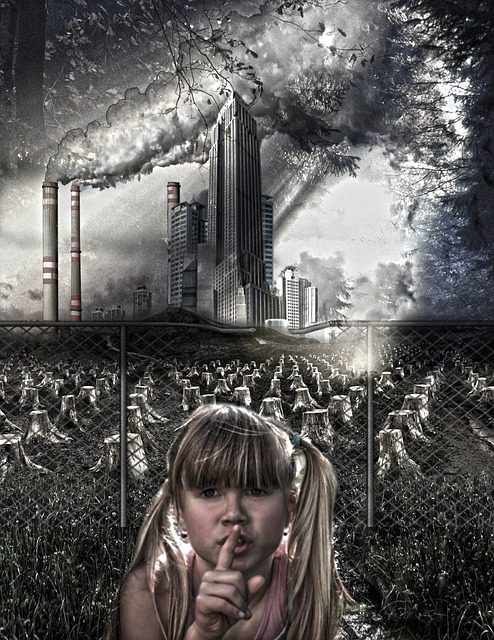It must be something in the water, they say… When a common trend takes hold of a community. Like a bunch of women in the same church get pregnant at the same time; or an extended family has a big wave of weddings in one summer; or a bunch of houses in the neighborhood go on the market at the same time.
Or when all the kids in a single town suddenly turn up with lead poisoning.
Except in the instance of a small town in Michigan, it is not proverbial. It is no folksy appellation. It is a real life iteration of what happens when something really does taint the water supply, affecting an entire community. There is for sure something in the water in the town of Flint, and it’s not a baby boom or the love bug, or any of those other cutesy things that take hold of groups of people from time to time. It is cloudy; it is dirty; it is poison. And somebody, somewhere knew about it and did nothing. 
What’s in the water in Flint is the living embodiment of white privilege; and a living example of how real and present racism still is in our culture.
Of course, as in any political maelstrom, it is difficult to know exactly who knew what and when… And therefore, equally complicated to identify responsible parties and hold them accountable. But all signs say that officials at both state and local levels were notified numerous times, by numerous bodies that there was something wrong with the new water supply–which the town switched in spring of 2014 as a cost-saving measure.
State officials heard concerns and deferred to local authorities. Local authorities heard concerns and… well that’s where the waters get murky (pardon the pun-not-pun). Of course, all the ambiguity about whose dang job it was to ensure clean water for the community does not help the appalling number of families that have experienced the ill-effects of dirty water. Nor does it help the town provide services for an entire generation of children that may have lasting health and developmental issues because of the lead (and God knows what else) they’ve been exposed to.
All that ambiguity also makes it a lot harder to prosecute someone. The criminal negligence becomes the product of a “broken system;” an invisible criminal with no name, face or voting record. Convenient.
I’m not much on math… but I’m willing to bet that the long term clean up and damage control from this scandal will be far, far more costly–for state and local government alike–than the initial million-plus they saved in switching to the sludge. But what do I know?
Well, one thing I know for sure: This would not happen in a predominantly white and wealthy suburb in America. It just wouldn’t. I do not have scientific evidence or well-researched statistics to prove it. But I know it just the same. And you know it too. Call everyone you know who lives in an affluent area, and ask them if there’s ever been a local or state government cover-up connected to an ongoing wide-spread public health crisis, and let us know what you find… I’ll wait right here.
I first heard the term “environmental racism” last summer. Maybe that is embarrassing to admit that I’ve only known this was a thing for less than a year… But when I first heard the term, my first thought was Environmental racism = a social and cultural phenomenon whereby living in a racist community/environment makes you also a racist. Makes sense to me, because I grew up in Southeastern KY. Which is a post for another day.
BUT–that is not what environmental racism means. In reality, environmental racism = a social and cultural phenomenon whereby impoverished areas, inhabited primarily by people of color, are more likely to experience the ill effects of pollution in the air, water and other natural resources. Yes, the cost of capitalism is that we outsource our pollutants–and dump them on poor people. Especially the poor people with brown skin. I did not know this was a thing. Now I do.
If, like me, you did not know that ‘environmental racism’ was a reality, don’t feel guilty–learn more. That’s what I’m doing. At my denomination’s General Assembly last July, our wider Church adopted a resolution to study environmental racism, and to engage in dialogue and civil action to address it. More recently, the Disciples of Christ and the United Church of Christ in Michigan have partnered to provide clean water to the people of Flint. At the same time, “the larger issue of this poor, predominantly African-American community becoming disenfranchised by the government and suffering health consequences remains.” It is an ongoing justice issue in that area and elsewhere. Read more about the combined effort and how to contribute.
Meanwhile, I want to know why it takes a widespread disaster to shine a light on this kind of reality. I want to know where the next Flint is going to be, and who is going to be held accountable for this one. I hope you’ll join me in asking those hard questions, and in learning more in the meantime…before the next time. Because this kind of thing, it really happens all over. Must be something in the water. And the air, and the soil, and the school buildings…
Read more:
Did the EPA Fail to Protect a Black Community from Environmental Racism?
Environmental Racism and Environmental Justice
Environmental Racism in the South Bronx: from Sojourners
Resolution from the Disciples of Christ Assembly, 2015












